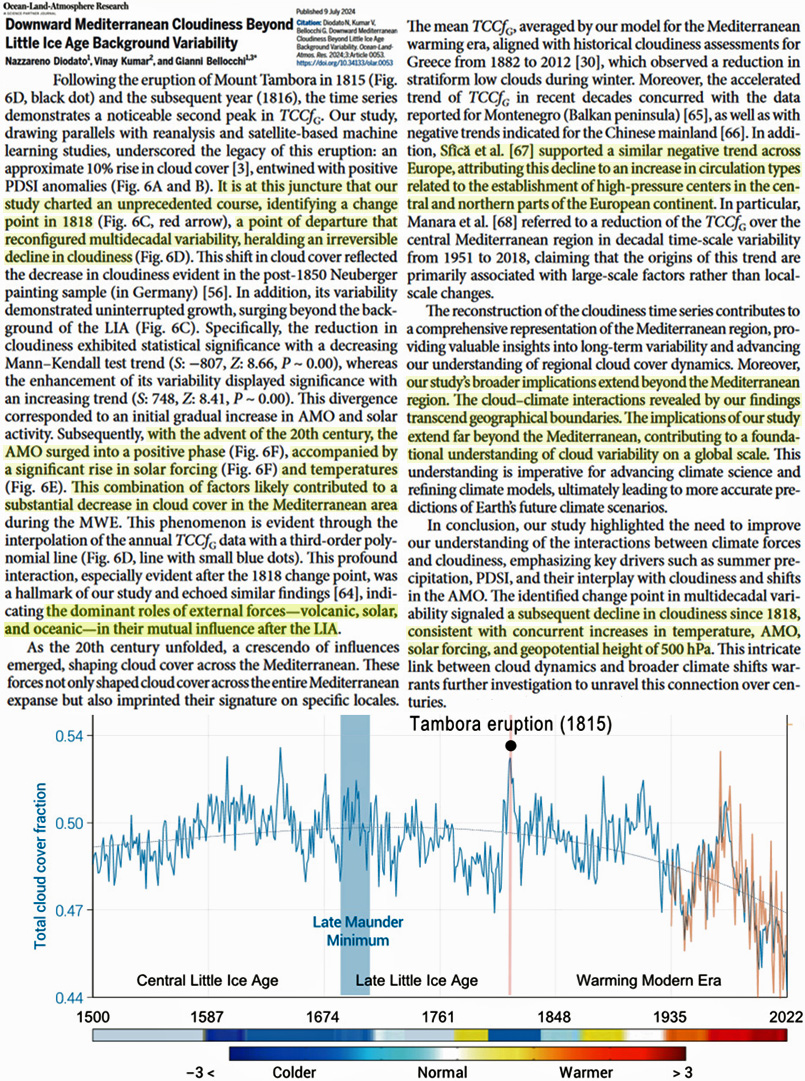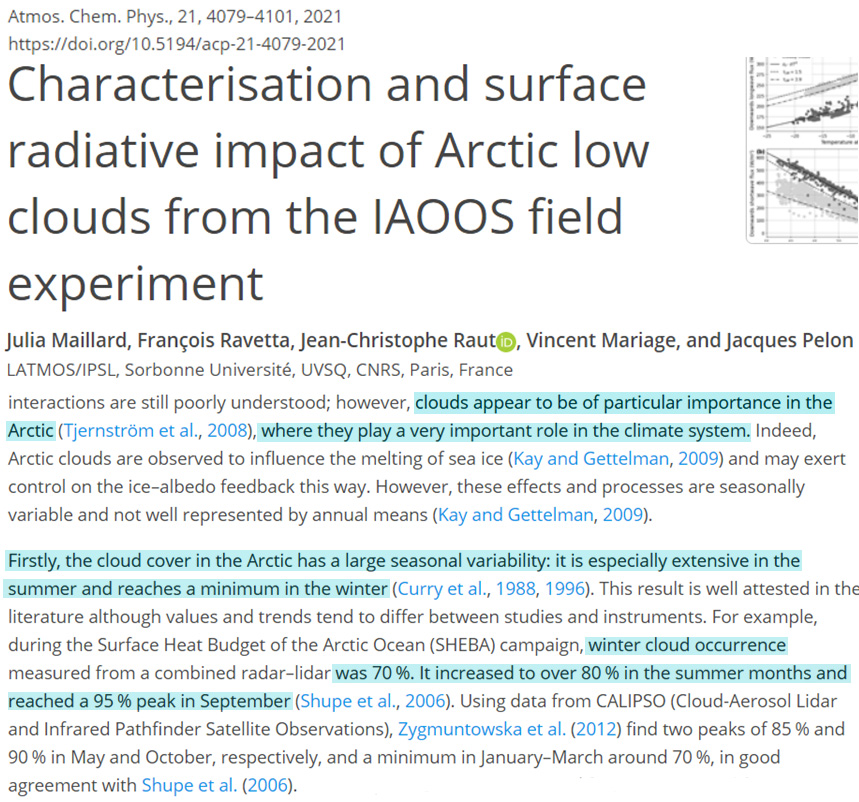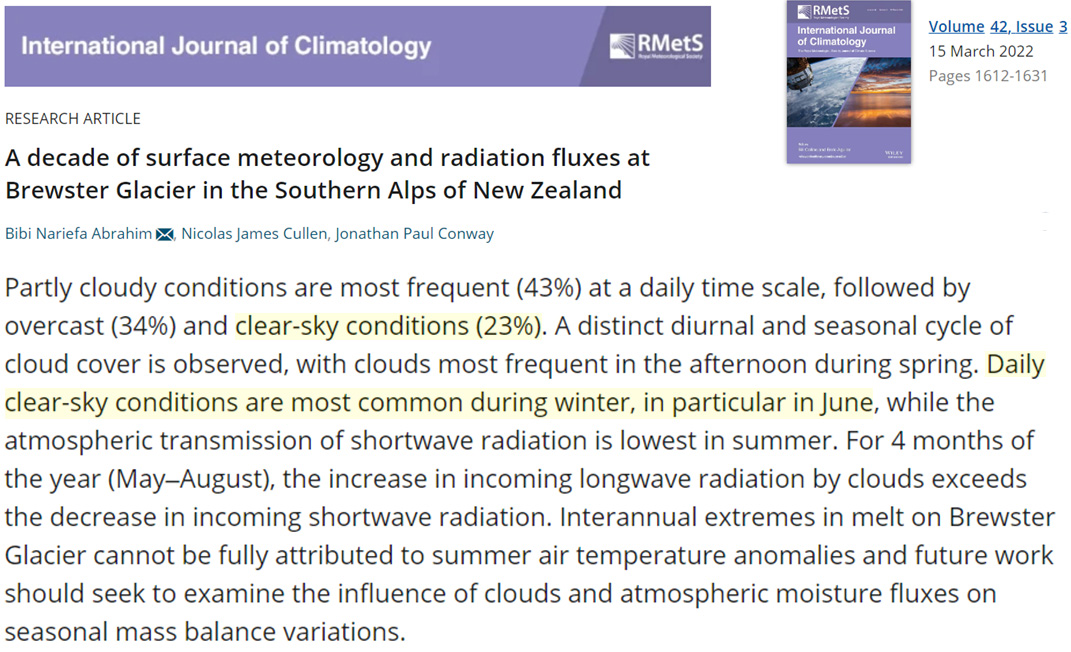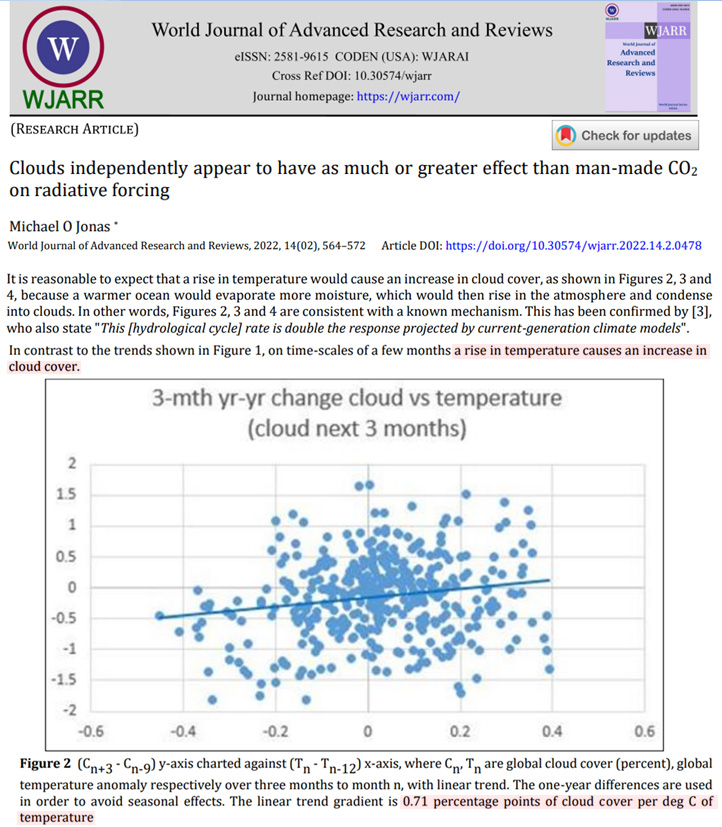Per a new study, the last 200 years of global warming are associated with cloud cover decline, and this decreasing cloud albedo can be linked to “the dominant roles of external forces – volcanic, solar, and oceanic – in their mutual influence after the LIA [Little Ice Age].”
Scientists have repeatedly reported a satellite-observed (CERES) cloud cover albedo decline that has led to an increase in solar radiation absorbed by the Earth’s oceans – a trend that explains the post-2000 temperature increase (Dübal and Vahrenholt, 2021, Loeb et al., 2021, Stephens et al., 2022, Koutsoyiannis et al., 2023, Loeb et al., 2024, Nikolov and Zeller, 2024).
Scientists have now formulated new 1500 to 2022 CE reconstruction of cloud cover over the Mediterranean region. The authors suggest their reconstruction of cloud cover may be representative of more than just this region, as it is a product of large scale processes that may “transcend geographical boundaries.” In other words, what happens in the Mediterranean region may well have global implications.
The reconstruction indicates the modern declining cloud cover trend may not only have been occurring since 2000, but, except for a brief increasing period from about 1945 to 1980 (that coincided with a global cooling trend), has been ongoing for over 200 years. The “turning point” years were 1815-1818, following the eruption of Mount Tambora. From that point on there has been a precipitous decline in cloud cover that departs from multi-decadal variability.
The authors suggest the “dominant” factors linked to the post-1800s include solar forcing, volcanic forcing, and the Atlantic Multi-decadal Oscillation (AMO).
“Our study…indicating the dominant roles of external forces – volcanic, solar, and oceanic – in their mutual influence after the LIA”
“This combination of factors [AMO surging to a positive phase, a significant rise in solar forcing] likely contributed to a substantial decrease in cloud cover in the Mediterranean area.”

Image Source: Diodato et al., 2024
Interestingly, the authors also repeat the model-based assumption that the post-LIA rising temperatures could have been a contributing causal factor in the 1800s-to-present cloud cover decline. In other words, the warming led to cloud decline, and not the other way around. This assumption is odd, at best. It is well known warmer seawater adds more water to the air than cooling seawater. Which is why, for example, water vapor concentrations reach 35,000 ppm in the tropics, but less than 1,000 ppm at the poles.
Also, it is well known that warmer summers are cloudier than colder winters (see Malliard et al., 2021 and Abrahim et al., 2022 below, for example). Cloudier summers can be 10 to 15°C warmer than clearer-sky winters across the middle and high latitudes. In contrast, the modern warming trend of only tenths of a degree in recent decades could only produce negligible changes in clouds relative to these much larger seasonal temperature changes. Besides, a decline in cloud cover is the opposite of what occurs with warmer temperatures anyway.


Image Source: Malliard et al., 2021 and Abrahim et al., 2022
Furthermore, real-world observations (Jonas, 2022) are very clear on the question of whether warming induces a decline in cloud cover.
“A rise in temperature causes an increase in cloud cover.”
“0.71 percentage points of cloud cover per deg C of temperature.”

Image Source: Jonas, 2022
Anthropogenic global warming apologists want to believe the observed decline cloud cover in recent decades is human caused. Thus, climate model inputs have been programmed to say warming from rising greenhouse gases leads to cloud decline, and cloud decline leads to more warming – a perpetual, runaway positive feedback.
Problematically, actual, real-world observations show warming leads to cloud increases, not decreases. Thus, neither warming nor rising greenhouse gases can explain the observed modern cloud decline.
And since declining cloud cover, a function of “unforced internal variabilty,” allows more solar radiation absorption at the surface, this can explain modern warming.





Recent Comments